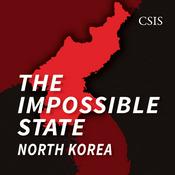Available Episodes
5 of 84
- The Thinking Soldier: Why Intellectual Curiosity Belongs In Your Belt Kit"The nation that will insist on drawing a broad line of demarcation between the fighting man and the thinking man is liable to find its fighting done by fools and its thinking by cowards." ~ Lt Gen Sir William F. Butler (1838-1910) In the British Army we pride ourselves on our readiness. Prowess in physical fitness, tactical decision-making and speed of action lie at the forefront of our profession. But there's one form of readiness that's often overlooked. It doesn't come from kit, drills or doctrine - it comes from the mind. Intellectual curiosity is the drive to ask questions. To explore ideas and seek deeper understanding that isn't just academic. It's a vital trait of the modern professional soldier and, if you're wearing the uniform, it belongs in your belt kit. Whether commanding or following, whether in a platoon or a brigade HQ, curiosity sharpens your edge. It helps you adapt faster, lead better and think deeper. It's not about having all the answers - it's about having the habit of asking better questions. Curiosity makes you Operationally Agile Today we are constantly reminded that the modern battlefield is ever changing and unpredictable. Hybrid threats, cyber warfare, AI, drones and information operations demand more than muscle memory. They demand mental agility. Soldiers who read widely, study adversary doctrine and reflect on historical campaigns build the cognitive flexibility to pivot under pressure. You don't need a PhD to be curious and it isn't just an officer sport. All ranks need the discipline to keep learning, even when the tempo is high: the tactical battle moves faster than the operational one. So what? Practical actions: 1. Read one article by Friday each week from a defence journal, historical case study or foreign doctrine summary. Start with RUSI, Wavell Room, CHACR or the British Army Review. Share an insight on Monday. 2. Join / start a Unit PME group - keep it informal, short, and relevant. One case, one question, 30 minutes, weekly or fortnightly, open discussion. 3. Find time in your schedule to scan open-source on military and defence topics. Ask: "What would I do if I were them?" The Institute for the Study of War is excellent for both the Russo-Ukrainian War and the Gaza conflict. Curiosity isn't a distraction from the day job - it's preparation for operations. It's what lets you spot patterns others miss, challenge assumptions, and make decisions that stand up under scrutiny. In short, it's tactical advantage in mental form. Curiosity strengthens Ethical Command Contrary to popular belief (mostly how it's portrayed in films!), military leadership isn't simply about issuing orders. It's about making decisions that hold moral weight. Whether you're dealing with civilians in a conflict zone, navigating the grey areas of rules of engagement or fighting high intensity peer-on-peer war, ethical clarity matters. Soldiers who engage with philosophy, law and cultural studies are training their intellectual and moral reasoning like they train their marksmanship. So what? Practical actions: 1. Investigate one case study per month from recent operations or historical dilemmas. Ask: "What would I do?" and consider the moral, ethical and tactical challenges. 2. Discuss moral challenges with your team - use real-world examples, not hypotheticals. Keep it grounded. 3. Explore cultural terrain before deployment - language basics, local customs, and historical context build empathy and reduce friction. Curiosity helps you see the human terrain more clearly. It gives you the language to explain your decisions, the empathy to lead with integrity and the confidence to act when the right choice isn't the easy one. In a profession built on trust, that matters. Curiosity builds a Better Army The British Army isn't just a fighting force - it's a living and learning organisation. Doctrine evolves, technology changes and the enemy adapts. If we want to stay ahead we need soldiers who think critically, challeng...--------8:43
- Mission Partnerships in UK Defence: How to make them workIntroduction: Defence as an engine for growth The government's Defence Industrial Strategy 2025 (DIS25) is clear that "business as usual" in procurement is no longer an option. Defence has been placed at the heart of the UK's modern industrial strategy, identified as one of eight priority sectors to drive economic growth and resilience. The strategy is frank in its diagnosis of the current system's weaknesses. Defence investment and economic strategy remain misaligned. Procurement processes have failed to adapt to an era where emerging technologies are reshaping warfare faster than at any point in living memory. Structural inefficiencies - from misaligned incentives to poor competition and weak exports - have left the UK industrial base struggling to deliver at the pace and scale required. DIS25 calls for something different: procurement that reduces waste, accelerates innovation, empowers SMEs, and crowds in private capital. It seeks to create a vibrant defence technology ecosystem, one where delivery is faster, risk is shared more equitably, and capability can spiral forward through rapid increments. The ambition is to transform the relationship between government and industry, so that defence becomes not just a consumer of technology but a driver of economic productivity. This context sets the stage for the idea of "mission partnership." The term is gaining currency across defence, but its meaning remains contested. At its best, it represents a practical shift in how programmes are delivered: a relationship structure where incentives, accountability and behaviours are aligned to outcomes. At its worst, it risks becoming a hollow buzzword, a softer synonym for "contractor" that re-badges old models without changing the fundamentals. The question this paper explores is whether mission partnerships can provide the practical vehicle through which the ambitions of DIS25 are realised. It argues that they can, but only if approached seriously: as a means of reshaping delivery behaviours, not simply as a new label for old practices. Why the system struggles today The weaknesses identified in DIS25 are not new. They are the product of decades of choices and cultural habits that have left the system ill-suited to today's demands. Policy pressure for pace, but institutional drag. Ministers have repeatedly signalled the need for faster delivery. The Integrated Procurement Model (IPM) commits Defence to deliver major equipment programmes within five years and digital programmes within three - targets that would have been unthinkable even a decade ago. Yet the approvals and governance cycles underpinning procurement remain rooted in Cold War-era timelines. Churn widens the knowledge gap. High turnover across MOD, particularly in technical and engineering roles, erodes institutional memory. Programmes lose continuity, forcing new teams to relearn the same lessons and repeat the same mistakes. This constant rotation undermines trust between customer and supplier, creating a public-private knowledge gap that grows wider with every cycle. Outsourcing legacies and switching costs. Two decades of outsourcing have left Defence dependent on a limited set of suppliers. Relationships have become brittle, with high switching costs that make even obvious changes operationally risky. Far from creating a competitive marketplace, outsourcing has often entrenched incumbents, leaving government hostage to long-term contract dependencies. Blurry boundaries and accountability. Too many programmes begin with contract mechanics rather than mission outcomes. Assurance is treated as paperwork to be satisfied, not as a shared responsibility for safety and performance. The result is a culture where suppliers do what the contract says, not what the mission requires. The combined effect is predictable: while policy demands agility and tempo, the system continues to generate delay. A shifting moment in defence innovation The environment, however, is shifting. T...--------15:53
- Lessons from the Greco-Turkish WarThe Greco-Turkish War was one of the largest and most consequential conflicts of the interwar period, spanning the period between World War I and World War II. It was a significant factor in the overall trajectory of the modern Middle East. The Hellenic Kingdom looked to expand its territory to connect with the Greeks of Asia Minor. In contrast, the nationalist forces under Mustafa Kemal looked to repel the Greek army and simultaneously expel foreign militaries to create a Turkish state. The war intertwined the Entente powers and revealed key lessons in logistics, the importance of a competent officer corps, and the use of key terrain to a defensive advantage, insights that can be studied for modern warfare today. Beginnings of the Greco-Turkish Against the backdrop of the capitulation of the Ottoman Empire, the remaining territories of the Middle East were placed under zones of influence (Sykes-Picot). In contrast, Asia Minor was put under full military occupation by several nations. The remnants of the Ottoman Empire were carved into a rump state by several nations. Turkish nationalist forces would conduct an insurgency led by Mustafa Kemal, a skilled military commander who had defeated British forces at Gallipoli, thereby securing their own state without foreign occupation. The Entente was overstretched, and its citizens felt the economic brunt of WWI, which made it hard for countries such as the UK and France to allocate sufficient forces capable of defeating the factions of Turkish nationalists. Instead, the British would support a key ally in the Mediterranean to defeat the Turkish army - the Hellenic Kingdom of Greece. During WWI, the Hellenic Kingdom, overseen by King Constantine I, initially decided to remain neutral despite having a pro-German government. This act caused anger among the Entente and pro-intervention Greek faction (the Venizelists), which resulted in Britain, France, and the latter exiling the then-monarch. The new government, led by Prime Minister Eleftherios Venizelos, adopted a core policy of irredentism regarding the historical Greek lands of Asia Minor, known as the Megali Idea. Furthermore, alongside Armenians, the remaining Greeks under the empire suffered from gruesome massacres amounting to genocide at the hands of the Ottomans in regions such as Eastern Thrace and Pontus, which also became another factor to initiate the war. With the military backing of London and Paris, who sought to quell the Kemalist insurgency that posed a threat to their zones of influence in Asia Minor, Athens initiated the Greco-Turkish War on May 15, 1919, during the naval landing in Smyrna. Early Hellenic Army Victories The Hellenic expeditionary army quickly secured the Greek mandate of Smyrna, then secured the outlying cities of Aydin, Menemen, Bergama, Ayvalik, and Cesme. After consolidating tens of thousands of troops, the British and Hellenic army would move to secure cities near the Sea of Marmara during the 1920 summer offensive. The Greek army captured the cities of Panormos, Izmit, Mudanya, Bursa, and Usak, securing much of Western Anatolia for both Athens and London. A Turkish counterattack at Gediz proved inconclusive before the winter set in. In Greece, King Alexander died from a monkey infection, and citizens felt from WWI and now feeling exhausted from an inconclusive campaign at the time in Asia Minor. A pro-royalist faction would win the upcoming elections, which would oust Venizelos as PM, who was replaced by Dimitrios Gounaris. The November 1920 elections would play a consequential turning point in the war going forward in 1921 and 1922. Athens Overstretched Its Logistics and Allied Support Wears Thin Instead of continuing to secure the coastlines where the Hellenic and British navies could provide maritime and logistical support, the Greek army pushed into Central Anatolia to defeat the Turkish nationalist forces for good. Later in the war, several Turkish factions organized into a more cohesive...--------12:29
- "After me, the flood"Editor note: this article was first published on angrystaffofficer.com here. Much has been written elsewhere regarding the unforgivable sin of failing to plan for known contingencies. Whatever one thinks of the current changes undergoing the United States Army, the least controversial thing to be said about them is that they certainly represent a change from what has come before. And regardless of what one thinks, or refuses to think, about their merit, one can say one other thing for certain: they will eventually yield. Sooner or later, the "idiosyncrasies" of the current administration will again be replaced by "regular order". They must, the only question is how long will that transformation take. As members of the profession of arms we must at least consider how we will collectively re-establish some of the fundamental characteristics and capabilities of our military in the period that follows. This is essential, because any period of chaos or lack of resolve on our part has the potential to imperil national defense. Without a plan, what could be a very bumpy transition could give rise to an exploitable opportunity on the part of America's enemies to damage American interests, threaten America's overseas holdings, gain footholds in the "near-abroad", or threaten mainland America itself. The US Army's unshakable contract with the American people to fight and win the nation's wars by providing prompt, sustained land dominance across the full spectrum for conflict does not leave a lot of time for navel gazing during periods of uncertainty or of transition. In so far as that political uncertainty may unavoidably involve our Army, it is our responsibility to plan our way to the other side of it so that we may safeguard essential capabilities and be in a position to continue mission. Retaking the moral high ground (rule of law) The current administration's problematic relationship with the principles that inform the just use of force, such as the rule of law and the laws of land warfare, have been comprehensively documented elsewhere. Recent examples, in the form of exploding Venezuelan fishing boats accompanied by official pronouncements of indifference to the legal niceties of such action, make the direction we are moving in all too clear. What concerns us here is how best to put Humpty Dumpty back again after he has been comprehensively damaged. Respect for the law that underpins the just use of force, and especially the various international regimes that support it, is difficult to build and easy to dismantle. This is especially the case where the offending party has heretofore held a pre-eminent role in maintaining the status quo. As America abandons her post as the guardian of international law and of the rules-based international order to seek a role as one among several regional hegemons this will, by design, create a destabilizing environment for smaller nations and could lead to the readjustment of borders through conflict. Thinking through to a future where America may once again seek to champion a rules-based international order, how might we, as nation and as an Army, seek to incentivize participation by smaller nations who we may have earlier abandoned to their fate? I would suggest, ironically, that by maintaining our military strength and capabilities we may again be able to benignly bully the world in a multilateral rules-based order that transcends "the law of the jungle" as we did in the post WWII period. More than that, we would have to identify and maintain reservoirs of good practice and learning that survive the current period - such as the jurisprudence of the International Criminal Court, independent centers for the study of international law (in so far as our institutional ones do not avoid becoming fatally compromised), and independent expertise to whom we might have resort when we need them to rebuild our own institutional capacity. Rebuilding academic infrastructure Similarly, the loss of academic...--------8:27
- Defence's New Industrial StrategyBritain's long awaited Defence Industrial Strategy 2025 (DIS 25) has been released. It commits the Government to the largest sustained uplift in defence spending since the Cold War and seeks to complement the ambition of Strategic Defence Review 2025 (SDR 25). It sets a short-term target of raising spending from 2% of GDP to 2.6% by 2027, declaring an "ambition" in the medium term for 3% by 2030 in the next Parliament. Longer term it outlines a "historic commitment" to reach a target of 5% alongside other NATO allies by 2035. The investment trajectory the strategy sets out seems intent not only to underwrite British national security but to position its defence industry as a key engine of sovereign economic growth, regional regeneration and technological capability development. DIS 25 follows close on the heels of the recent announcement of a successful £10bn contract being signed for the UK to supply the Norwegian navy with Type 26 anti-submarine frigates. Its release also coincides with the Britain's flagship defence industry sector event Defence and Security Equipment International 2025 (DSEI 25) in London that serves as a physical totem of the Government's intention to encourage domestic and international commercial interest. The 108-page strategy document contains suitably impressive numbers related to investment allocations. UK Defence Innovation has been tasked to "invest in [Britain's] most innovative defence companies" with a ring-fenced annual budget of £400 million, plus a mandate that 10% of its equipment procurement is spent on novel technologies. Likewise, £15 billion has been committed to the "sovereign warhead programme" and a further £6 billion to "strengthen our supply chains… in munitions this parliament". Efforts have also been made address procurement efficiency with the National Armaments Director being given authority of a "new segmented approach". Coupled with a commitment to a five-year, proactive forecasting process promises to reduce the need for emergency budget supplements and enhance market trust. Reference is also made throughout to wider Government targets that promise to "reduce administrative costs of regulation to business… to create a regulatory environment fit for the current era of threat". Taken on face value, there is much to be optimistic about. For the British Army there is much to be encouraged by. Faster contracting and procurement cycles promise to narrow the gap between user requirement definition and frontline delivery. Projects such as RAPSTONE and ASGARD are recent examples of how this approach can be done, alongside more deliberate (i.e. traditional) programme of record processes that continue at pace. Expanding these 'proven commercial routes' to deliver capabilities for units and formations that range from armoured platforms, ground-based sensors, communication suites and munition stocks is an exciting prospect. Equally promising is the DIS' pledge to "increase prototype warfare" as this directly relates to the Army's wholesale drive for Robotics and Autonomous Systems (RAS) integration at every echelon. From a section operating with Uncrewed Ground Vehicles (UGVs) and Air Vehicles (UAS), to a formation headquarters that can plan and execute with AI-enabled battlefield analytics, this approach may see the transition from lab to field at unprecedented speed. That said, whilst DIS 25 has been broadly welcomed for its ambition, there are concerns and criticisms surrounding DIS 25 it. Commentary at DSEI 25 revealed a persistent frustration among industry leaders regarding the MOD's pace of reform, particularly in contracting and capability delivery. Concerns were voiced about bureaucratic inertia and the slow translation of strategic ambition into executable contracts, with some firms publicly citing delays in the Land Mobility Programme (LMP) and uncertainty around the new medium helicopter programme as emblematic of systemic issues. In contrast, speeches by Defence Secretary...--------8:02
More Government podcasts
Trending Government podcasts
About Wavell Room Audio Reads
An improved audio format version of our written content. Get your defence and security perspectives now through this podcast.
Podcast websiteListen to Wavell Room Audio Reads, No es el fin del mundo and many other podcasts from around the world with the radio.net app

Get the free radio.net app
- Stations and podcasts to bookmark
- Stream via Wi-Fi or Bluetooth
- Supports Carplay & Android Auto
- Many other app features
Get the free radio.net app
- Stations and podcasts to bookmark
- Stream via Wi-Fi or Bluetooth
- Supports Carplay & Android Auto
- Many other app features


Wavell Room Audio Reads
Scan code,
download the app,
start listening.
download the app,
start listening.






























